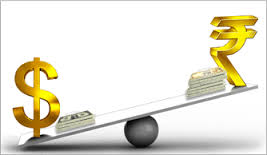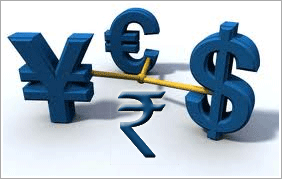Most of the people use the terms ‘devaluation of currency’ and ‘depreciation of currency’ synonymously. The reason could be because the both terms indicate a lower value of domestic currency with respect to the rest of the world. But there is significant difference between the usages of the terms. The difference is obtained in the reason that causes depreciation or devaluation. To understand it fully first we need to know the foreign exchange rate systems that various countries follow. These are:
- Fixed Exchange rate regime: In this regime the foreign exchange rate is set by the concerned monetary authorities. There is no fluctuation in the exchange rate. Rate is not determined by market forces. In order to maintain the fixed exchange rate the central bank intervenes by buying or selling the foreign exchange reserves.
- Flexible exchange rate regime: In flexible exchange rate regime, there is no intervention by the authorities. The exchange rate is determined by the interaction of demand and supply. At equilibrium the demand and supply are equated. Fluctuations in demand and supply change the price of the currency. For example when demand for the domestic currency is high, its price increases; whereas if the demand falls the price also falls.
- Floating exchange rate regime: This regime is the most used across the countries. In this system the central bank allows the exchange rate to be freely determined but at the same time has the authority of intervention to influence the exchange rate at certain times. The rate is determined by market forces, but under certain situations the central bank influences the rate by buying and selling of foreign exchange.
Now comes the real question – what about the terms depreciation or devaluation?
The answer is as follows:
Devaluation occurs when the central banks willingly lower the value of the domestic currency in terms of the foreign currency. This is done under the fixed exchange regime where the central bank purchases the foreign currency. Devaluation is done with the aim of stimulating the exports of the country.
Depreciation takes place when the price of the domestic country with respect to the foreign currency decreases under the flexible rate system as a means of interaction of market forces. It occur when the demand of foreign currency rises or the supply of domestic currency increases.
Therefore next time if somebody interchanges these terms to mean the same thing one should tell the difference between the two and the rationale behind the terms.





37 Comments. Leave new
good job!
Thanks!
thanks
nice
Well explained!!
Thanks!
Well written.
Really very well written megha! Like the way you have explained about devaluation and depreciation
Thanks! 🙂
Really very well written megha! Liked the way you have explained about devaluation and depreciation .
this article would help eradicating peoples’ misconception which they have, i.e. devaluation and depreciation are synonymous.
🙂
a distinction people badly need to know!They tend to use these terms interchangeably
Nice article
Thanks
Good one….
Thanks!
Very well written.. Good work..
Thanks
Well described and written!
thanks
nice explanation…good.
thanks
Informative article. Worth reading it.
Thanks
Explained well..!
Thanks
Good article.
Thank you!
well structured and informative
Thanks!
Informative. Nicely explained.
Well said, Megha!
you have explained the concept very well 🙂
Great!!
truely said megha 🙂
Academic right?? seems you too an economist … 😛